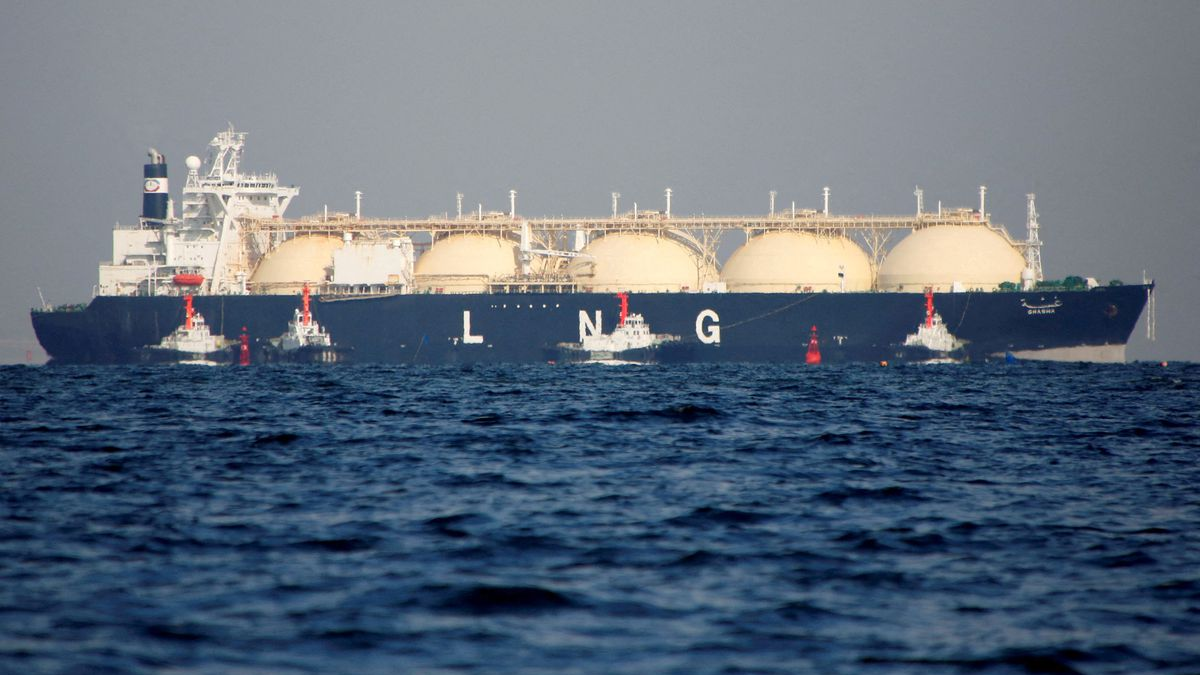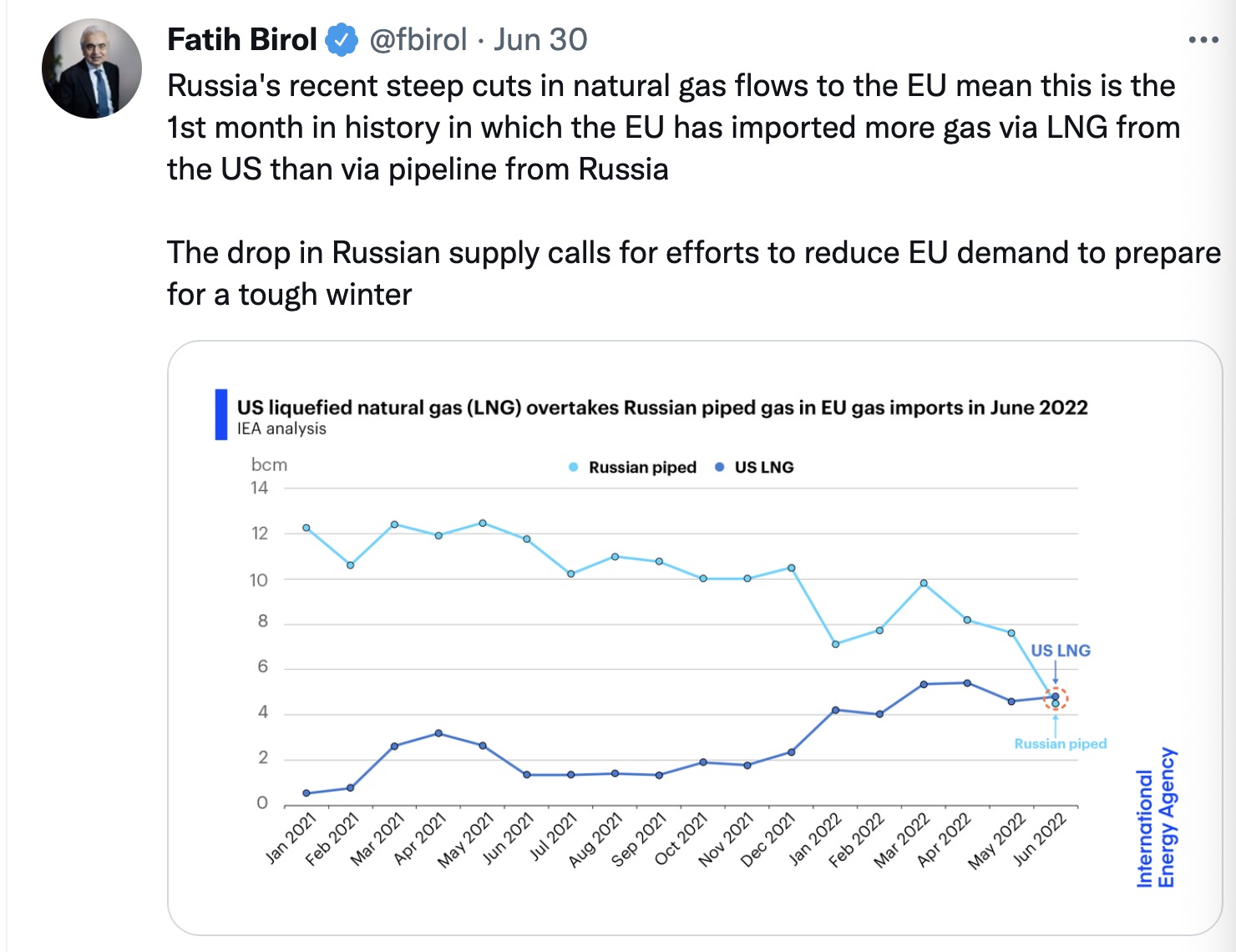
U.S. supplies more liquefied natural gas (LNG) to Europe than Russia sends by pipelines for the first time, according to data released by the International Energy Agency (IEA), June 30, 2022. /Reuters
U.S. supplies more liquefied natural gas (LNG) to Europe than Russia sends by pipelines for the first time, according to data released by the International Energy Agency (IEA), June 30, 2022. /Reuters
For the first time, the U.S. provided more liquefied natural gas (LNG) to Europe than Russia sends by pipelines, according to the latest data released by the International Energy Agency (IEA).
Russia ships about 150 billion cubic meters of gas to Europe via pipelines every year, and another 14 billion to 18 billion cubic meters of LNG, accounting for over 40 percent of total imported natural gas of Europe. In 2021, Russia met more than a third of the European Union's (EU) gas demand, said the IEA.
However, in response to sanctions imposed by the West amid the Russia-Ukraine conflict, Russia slashed natural gas shipments through Nord Stream to Europe in June, halting gas supplies to European countries such as Finland, Poland, Bulgaria and others.
Due to annual maintenance, Russia said it is also planning to pause gas supplies to Germany in mid-July.

Screenshot of a tweet of IEA Executive Director Fatih Birol
Screenshot of a tweet of IEA Executive Director Fatih Birol
EU seeks gas alternatives
In this case, Europe is seeking alternatives such as U.S. LNG to Russian supplies which cut off shipments to countries that didn't comply with new payment terms.
IEA Executive Director Fatih Birol said in a tweet that "Russia's recent steep cuts in natural gas flows to the EU mean this is the first month in history in which the EU has imported more gas via LNG from the U.S. than via pipeline from Russia."
"The drop in Russian supply calls for efforts to reduce EU demand to prepare for a tough winter," said Fatih Birol.
In March, the EU agreed on an additional 15 billion cubic meters of U.S. LNG this year to displace Russian gas, and the bloc even intended to replace a third of Russian gas with LNG from various sources in 2022.

